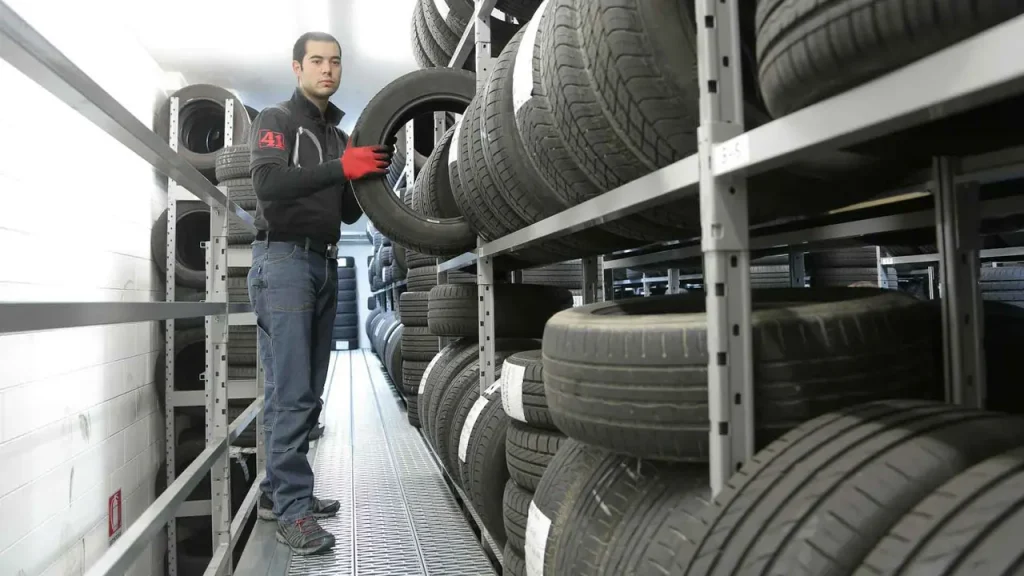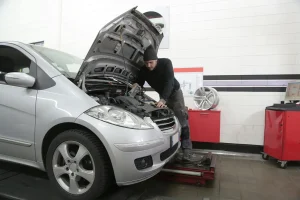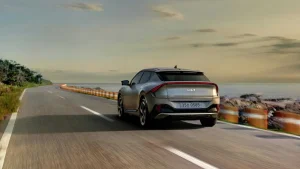
Tyre and Vehicle Safety Technology Development Explained
Driving isn’t what it used to be, and honestly, that’s a very good thing. I remember my first car, a rattletrap with more personality than safety features. It had seatbelts, a horn, and well, that was about it. The idea of a car actively helping to prevent an accident felt like pure science fiction. But today, the relentless pace of automotive safety development has completely rewritten the rulebook. We’re living in an era where our vehicles are becoming proactive partners in our own survival on the road. It’s a quiet revolution, happening one sensor and one algorithm at a time, making every journey just that little bit safer. This entire field is dedicated to reducing human error, which, let’s face it, is the cause of most collisions. The progress is simply staggering.
The Road Ahead: Understanding Tyre and Vehicle Safety Innovations
Navigating the modern automotive landscape means grappling with a dictionary of acronyms: ADAS, AEB, TPMS, V2X. It can feel overwhelming. But behind these letters lies a suite of technologies designed with a single, unified purpose: to protect us. The evolution from passive safety features—things like airbags and crumple zones that react during a crash—to active systems that prevent the crash from ever happening marks a monumental shift. This is the core of modern vehicle safety engineering. It’s not just about surviving an impact anymore; it’s about avoiding it altogether. This proactive approach is saving lives every single day, often without the driver even realising they were in danger. It’s a silent guardian, constantly monitoring and ready to intervene. This constant innovation is what pushes the industry forward.
The Foundational Role of Tyre Technology in Automotive Safety
Let’s get back to basics for a moment. You can have the most advanced braking system in the world, but if your tyres can’t grip the road, you’re just a passenger on a very expensive sled. It’s a truth that’s too often overlooked. The four postcard-sized patches of rubber are our only connection to the tarmac, and they are the foundation upon which all other safety systems are built. Ongoing innovation in tyre and vehicle safety is crucial because it enhances this fundamental connection. A better tyre means better braking, better steering, and better stability. It’s that simple. And that complicated.
Smart Tyres: Monitoring and Adapting to Road Conditions
This is where things get really interesting. We’re moving beyond “dumb” rubber. Smart tyres, embedded with sensors, are the next frontier. Imagine a tyre that can feel the road surface and instantly report back to the car’s central computer about wet patches, ice, or loose gravel. This data allows the vehicle’s stability and traction control systems to adjust their parameters in real-time, long before the driver could ever feel the loss of grip. We are seeing major developments in this area. These tyres can also monitor their own health, tracking tread depth, temperature, and structural integrity. This represents a significant leap forward and showcases the amazing future trends in smart tyre technology.
Tyre Pressure Monitoring Systems (TPMS): A Critical Overview
I learned this lesson the hard way. Years ago, on a rain-slicked motorway, my car suddenly felt wrong. A slight shudder, a pull to the left. I’d ignored the little warning light on my dash for a day, thinking it was just a minor fluctuation. It wasn’t. It was a slow puncture. As I went to change lanes, the car aquaplaned for a heart-stopping second. The stability control flickered, the car corrected, but my knuckles were white. That little light, the TPMS, was screaming at me for a reason. Underinflated tyres are a massive safety risk; they overheat, handle poorly, and increase braking distances. The benefits of a tire pressure monitoring system were explained to me in that single terrifying moment, more potently than any manual ever could. It’s a non-negotiable feature for me now, a testament to practical, life-saving technology.
Enhancing Durability with Run-Flat and Self-Sealing Tyres
The dreaded roadside tyre change. It’s not just an inconvenience; it can be incredibly dangerous, especially on a busy road or at night. Run-flat and self-sealing tyres are designed to eliminate this scenario. Run-flats have reinforced sidewalls that allow you to continue driving on a flat for a limited distance, giving you time to get to a garage. No panic. No danger. Self-sealing tyres contain a special liner that automatically plugs most common punctures from nails or screws. While they have their own trade-offs in terms of ride comfort and cost, understanding the advantages of run-flat tire technology highlights a key goal of modern automotive safety: maintaining vehicle control and getting the driver out of a hazardous situation. The peace of mind is invaluable.
Advanced Vehicle Safety Systems: A Shield on the Road
If tyres are the foundation, then advanced vehicle safety systems are the intelligent shield built upon it. These systems use a network of sensors—cameras, radar, lidar—to build a 360-degree picture of the world around the vehicle. They see things you might miss. A pedestrian stepping out from behind a bus. A car in your blind spot. The vehicle ahead suddenly slamming on its brakes. This sphere of awareness helps explain what active vehicle safety systems are all about; it’s about seeing danger coming and taking action. This is the very essence of modern vehicle safety technology development.
Advanced Driver-Assistance Systems (ADAS): Features and Functions
ADAS is the umbrella term for these features. It’s a broad category, encompassing everything from adaptive cruise control that maintains a safe following distance, to automatic high beams that dip for oncoming traffic. And these systems are getting smarter. The goal isn’t to take driving away from us, but to reduce the cognitive load and provide a safety net for those moments of distraction or fatigue that affect even the best drivers. The benefits of advanced driver assistance systems are clear: fewer minor scrapes, reduced stress in heavy traffic, and a lower chance of major accidents. This field of technology is arguably the most visible to consumers.
Preventing Accidents with Autonomous Emergency Braking (AEB)
This one is a game-changer. AEB systems use forward-facing sensors to monitor the road for potential collisions. If it detects a hazard and the driver doesn’t react in time, the system first provides a warning (a beep or a flash) and then, if necessary, applies the brakes automatically. It can be the difference between a near-miss and a serious rear-end collision. Some systems are sophisticated enough to detect cyclists and pedestrians. To explain autonomous emergency braking systems is to describe a digital co-pilot with lightning-fast reflexes. The continuous improvement in sensor fusion makes these systems more reliable every year. For anyone who has felt that sudden jolt as the car brakes for them, you know the value of this incredible technology.
Navigating Safely with Lane-Keeping and Blind Spot Technologies
Long, monotonous drives are a recipe for a lapse in concentration. Lane-Keeping Assist uses cameras to watch the road markings and will gently nudge the steering to guide you back to the centre of your lane if you start to drift without signalling. It’s a subtle but effective way to combat fatigue. Blind Spot Monitoring is another incredibly simple, yet vital, technology. It uses radar sensors to detect vehicles you can’t see in your mirrors, illuminating a warning light to prevent you from pulling out into their path. Both are fantastic examples of how safety technology addresses very specific, very common human driving errors.
Vehicle-to-Everything (V2X) Communication: Connecting for Safety
Here’s the next leap forward. V2X allows vehicles to communicate with each other (V2V), with infrastructure like traffic lights (V2I), and with pedestrians (V2P). Imagine your car knowing a vehicle five cars ahead has just braked sharply, long before you can see the brake lights. Or being warned that a car is about to run a red light at the next intersection. The impact of V2X communication on vehicle safety will be profound, creating a cooperative network where cars work together to avoid collisions. This collaborative approach is a key focus for future safety development.
Synergy in Safety: Integrating Tyre and Vehicle Technologies
This is where everything comes together. The most effective safety outcomes happen when these two worlds—tyres and vehicle systems—are not just co-existing, but actively collaborating. The information from a smart tyre about low grip conditions can be fed directly to the AEB, allowing it to adjust its braking force to prevent a skid. Data on tyre pressure and temperature can inform the stability control system how to best distribute power. This integration is the holy grail of automotive safety engineering. It creates a holistic system that is smarter and more responsive than the sum of its parts. True progress in this field depends on such synergy. The seamless communication between components is where the magic of modern automotive safety truly lies. It’s a complex dance of data and mechanics.
The Future of Automotive Safety: Trends and Developments
The pace of change isn’t slowing down. If anything, it’s accelerating. The drive towards fully autonomous vehicles is pushing the boundaries of what’s possible, with lessons learned being funnelled back into the driver-assistance systems we use today. Material science is producing stronger, lighter materials for vehicle bodies and more advanced compounds for tyres. The future of this technology is incredibly bright, and we are on the cusp of even greater breakthroughs.
Artificial Intelligence and Predictive Safety
The next evolution is predictive safety, powered by AI. Instead of just reacting to a hazard, future systems will aim to predict it. AI algorithms can analyse data from the vehicle’s sensors, combined with map data and even driver monitoring systems, to anticipate risky scenarios. The role of AI in predictive safety features could involve identifying a drowsy driver and suggesting a break or recognizing a historically dangerous intersection and heightening the car’s sensor awareness. This proactive, intelligent layer is a critical part of ongoing safety innovation.
Evolving Regulatory Landscape and Safety Standards
Innovation is also being driven by regulation. Governmental bodies and independent testing organizations like Euro NCAP are constantly raising the bar, demanding higher levels of safety for new vehicles. Cars that don’t include certain ADAS features simply can’t achieve a top safety rating anymore. These standards force manufacturers to adopt new technologies more quickly, making our roads safer for everyone. This regulatory push is a vital catalyst for the entire field of vehicle safety, ensuring a baseline of safety for all new cars.
Driving Towards Zero Accidents: The Impact of Ongoing Innovation
The ultimate goal, the North Star for every engineer in this field, is a future with zero traffic fatalities. It may sound impossibly utopian, but every incremental improvement, every new sensor, and every clever piece of code brings us a tiny step closer. It’s a journey made of thousands of small steps. From the humble tyre to the AI-powered supercomputer, the fusion of technologies is creating a formidable safety net. The relentless and life-saving work in this field is transforming our relationship with the automobile. It’s a future I’m genuinely excited to see unfold—one where the tragic cost of mobility might finally become a thing of the past, thanks to a continuous cycle of innovation and a testament to human ingenuity.







